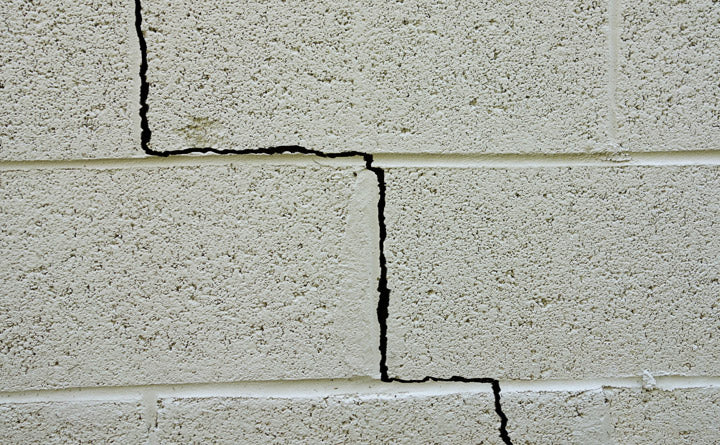Foundation shearing is a common structural problem seen on homes in nearly every type of climate in the United States. It most often looks like stair-step cracking in your foundation. Regardless of the age of your home, shearing can plague a structure, and it should not be ignored. In fact, the longer you put off fixing the problem, the worse the damage is going to be, and the more you could potentially have to pay to get the foundation repaired.
What causes foundation shearing?
- Soil conditions
- Hydrostatic pressure
- Poorly backfilled soil around a home
- Freeze/thaw cycle during cold weather
Soil conditions
Shearing is most often a result of poor soil conditions around the base of a home. Some soil types, such as clay, are worse than others when it comes to causing structural problems.
Poorly backfilled soil
If the soil around your home wasn’t backfilled properly, packed areas and gaps in the dirt can surround your foundation. As this soil expands from moisture and shifts from the natural movement of the earth, this can put extra pressure on your foundation walls.
Freeze/thaw cycle
If you live in an area of the country that experiences cold weather during the winter months, foundation shearing can also be caused by the earth expanding and contracting during the freeze/thaw cycle. The movement of the earth can push your foundation up or down.
What is hydrostatic pressure?
Hydrostatic pressure is exerted on your basement walls from moisture-filled soil. Again, depending on where you live and what type of soil is found around your home, there may be a lot or a moderate amount of pressure being exerted on your foundation walls after rainfall or when there’s melting snow on your property.
What can a homeowner do to prevent foundation shearing?
You can’t control what type of soil is on the property where your home was built. However, there are a few things you can do to help counteract the pressure being applied on your basement walls from the earth.
For example, wall anchors can be installed, tying your basement walls to the undisturbed soil beyond your backfill. The anchors’ job is to stabilize your foundation and prevent problems caused by the pressure being exerted on it by the soil. Additionally, I-beams can be installed to help strengthen your foundation walls from inside your home.
Why should I fix sheared foundation walls?
Your foundation’s job is to hold up your family’s home. If it’s weak and deteriorating, your residence won’t be safe. Also, if you don’t fill and seal foundation cracks caused by shearing, it’s only a matter of time before moisture starts to seep inside and cause even more problems.
Furthermore, a foundation that shifts around in the soil can cause problems for your home’s sewer, water and gas lines. This movement can cause the lines to become weak in certain spots, or they may break open. This type of repair is not covered with our home warranty plans.
Foundation shearing is a serious structural problem that should be dealt with sooner rather than later.


